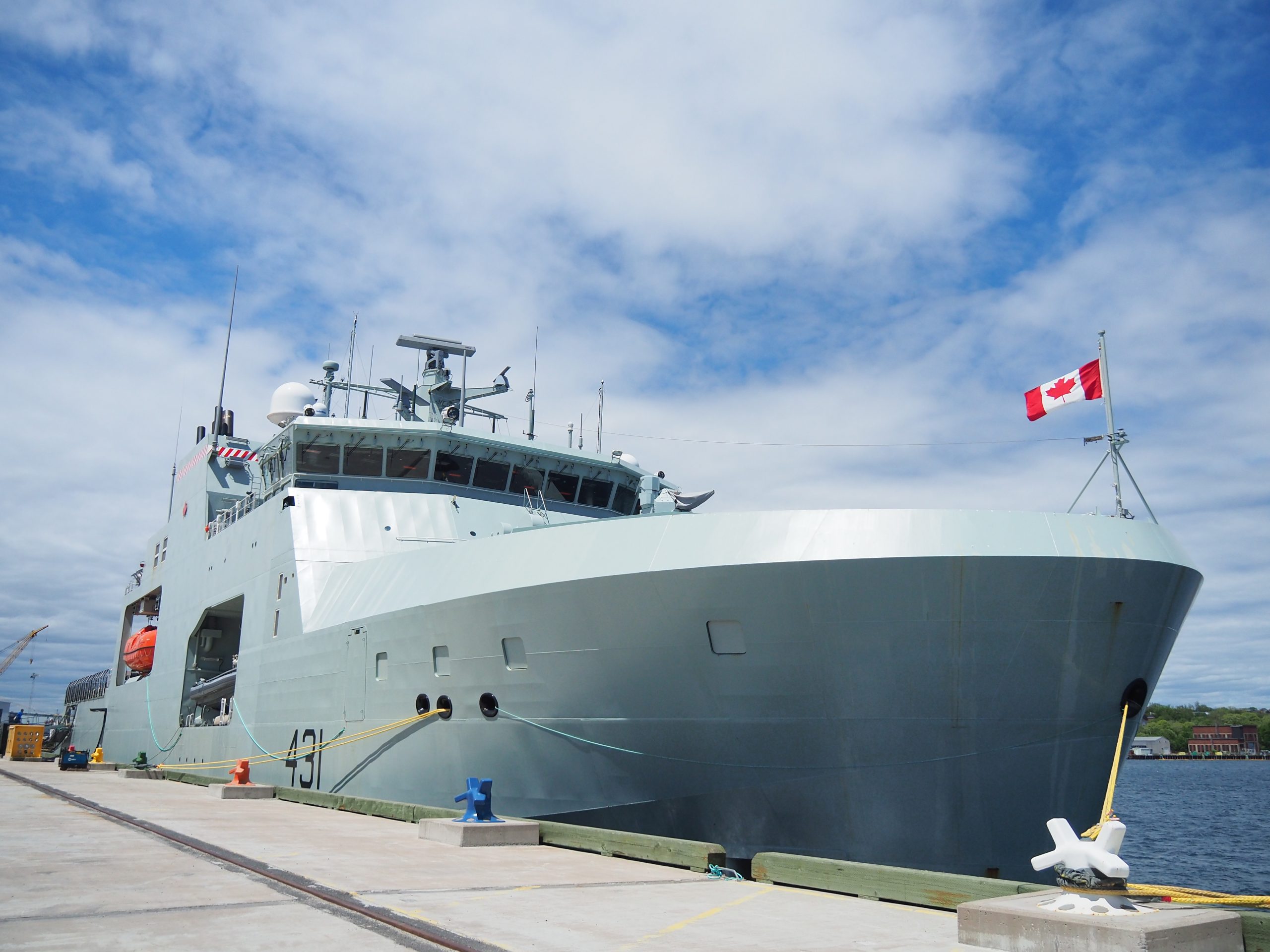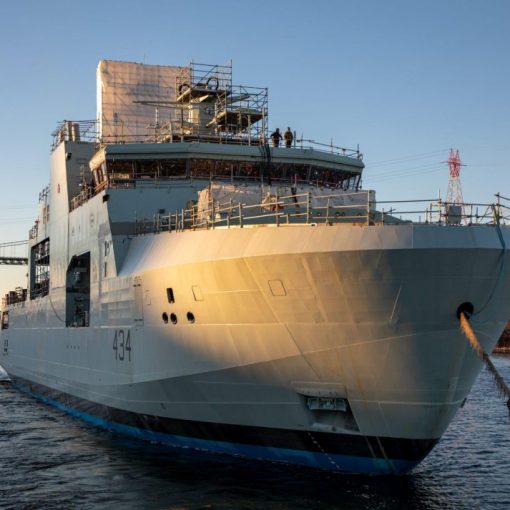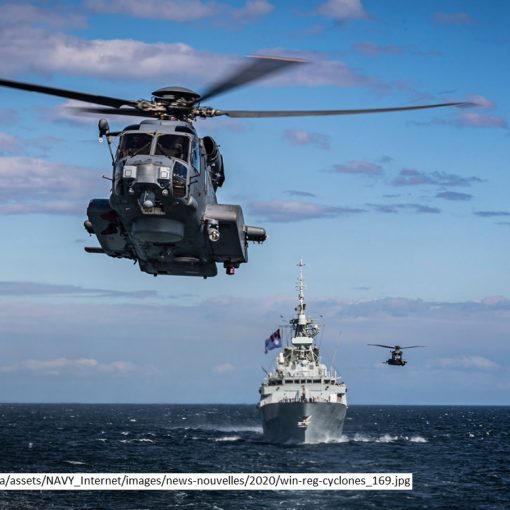By Bill Featherstone, 4 October 2022
There has been much rhetoric about the viability and use of the new AOPS/V Harry DeWolf (HDW) class, of which we now have three in service and three more in construction. Also in this mix are two slightly modified versions for the Canadian Coast Guard (CCG).
The amount of negativity being heaped upon these vessels as being useless in terms of combat effectiveness is surprising. Well, that might have some validity if they were in fact designed for combat, which they are not, hence the name, Arctic and Offshore Patrol Ship/Vessel. It is clearly stated in their proposed use that they are not combat vessels, but some critics, who should know better, think they were just poorly planned and designed. Some of that criticism is perhaps well intended, but there is always a limit as to what the public (electorate) will tolerate in terms of any spending, let alone defence spending. If there needs to be a focus of criticism, it really should be directed there, where a possible difference could be made. Likely not immediately, but over time.
The critics also need to return to some of the basics about Arctic climate change, currently occurring at about three to four times that of the rest of the world. Canada owns a vast portion of the Arctic Archipelago and we have little to no maritime surveillance capability in our North. Fundamentally, the AOPS were designed to assist in that role. Some even suggest that the AOPS are only rated for Arctic summer use. This is nonsense. HDW class vessels have Polar Class (PC) 5 rated hulls which state: “Year-round operation in medium 1st year ice, which may include old ice conditions.” The bow portion of the HDW class is strengthened to PC 4. This allows breaking up to 1 metre of ice. This equates to what is also referred to as 5/10 ice (open sea with 50% ice cover).
They were designed to provide surveillance and assist in Arctic sovereignty as may possibly be required. Obviously, they would not be in the North West passage (NWP) in the winter, when no other surface vessels would likely be there either. Adam Lajeunesse stated it perfectly: “The AOPS were designed to provide that measure of control [sovereignty], manifested in the increased awareness and response and support capability which they will provide.”i This is a constabulary role, clearly stated in the AOPS specification of use. The precise idea of use is to show a visible presence as Arctic Sea ice diminishes and maritime traffic increases. The AOPS have the ability to assist and support other government departments as required.
I am well aware of the argument of many, stating: ‘what good is a warship that can’t go to war.’ I hate repeating myself, but the AOPS is not, nor was ever intended to be a combatant or man-of-war vessel. The RCN has a role in the Arctic currently for the AOPS as designed. It has a strong constabulary role with a 25 mm MK 38 cannon on its bow and a Sikorsky CH148 Cyclone helicopter on its stern capable of about 160 mph. With a small RCMP complement as required or needed, this is more than sufficient to chase down any Arctic transit smuggling or piracy that might occur. Deterrence without a shot being fired is also quite possible.
Some suggest that the RCN AOPS should be transferred over to the CCG. There is a possibility of that some years from now when the RCN has further developed and procured its requirements for Arctic operations. But I doubt they would all go. The CCG really requires more heavy icebreaking capability. There may be some combatant vessels in that RCN Arctic mix, i.e., the Type 26 CSC style under consideration. Although, there is considerable critique about these as well.
Space is limited for this response, and all the abilities of the AOPS have not been covered, nor have they all been realized on the current vessels in operation. My experience has shown, that these capabilities -- that are certainly and technically state of art -- require sometimes a year or two to be fully operational. There will always be criticisms about defence procurement. The real question in the case of the AOPS is what did we have before to do this job? Can the AOPS fulfill the role? I think the real answer is clearly we will just have to wait for awhile.
i. Adam Lajeunesse, Unarmed Warships: What are the AOPS for? CGAI, June, 2018. Pp. 1-7. (p. 3)





13 thoughts on “Arctic and Offshore Patrol Ship/Vessel ”
Russians have a year round ship – at latest report was at 82N. https://www.northernforum.org/en/news/partners-news/1026-new-russian-research-ship-north-pole-starts-sea-trials
Interesting post. But I struggle to derive the conclusion. “I think the real answer is clearly” [missing?], and “we will just have to wait for awhile” [until global warming kicks in, and the ice melts to 5/10 ratio?]. Also, I agree that BAE 25mm cannon is better than nothing. But to retrofit AOPS with a heavier weapon system would be a nightmare from Engineering Change perspective. It could’ve been something ‘fitted for, but not with’. For example, Sikorsky can carry Mk45s. Right now the only AAW defence AOPS has is PC 5 rated hull and a hope to deter without a shot.
Comment on Featherstone
Your post makes the valid point that the RCN’s AOPS were never intended to be combat ships, and that they do not perform this type of role today.
However, our post conveys the misleading impression that the AOPS has an organic large maritime helicopter capability. While it is true that the AOPS can operate the CH-148 Cyclone helicopter on a limited basis, the ship normally embarks a much smaller and lighter CCG utility helicopter–the Bell 429 or the Bell 412. Some analysts have noted that the AOPS is “fitted for, but not with” the Canadian Recovery, Assist, Secure, and Traverse system (C-RAST) (formally known as the Helicopter Hauldown and Rapid Securing Device) which would allow these ships to operate larger helicopters on an ongoing basis. However, the C-RAST does not yet exist, and the smaller helicopters are instead moved on deck with a helicopter mover– basically a powered pallet dolly. In addition, my understanding is that the AOPS lacks sufficient aviation fuel tanks for sustained helicopter operations.
Moreover, all AOPS helicopter air operations are strictly limited to very moderate sea state and wind conditions. This is a far cry from the much more challenging helicopter operations normally encountered aboard the Halifax-class frigates.
The AOPS can also operate the large CH-149 Cormorant search and rescue helicopters, but from the outset this was intended to be only for emergency situations.
Dan Middlemiss
Good morning Dan,
Just to be clear, are you saying that the AOPS do not have any equivalent of the Bear-Trap system to move Cyclones on the flight deck and inside the hangar and to assist them in landing on the flight deck? In other words, they use the same technologies as the Maggie and the Bonnie in the 1950s and 1960s – LSOs and aircraft handling tractors?
I quite agree Les! The AOPS are spec’d out for a CH 148 and I can’t imaging them NOT having a bear trap system. I have never heard of them operating the Bell or any other small helicopter. Perhaps someone with more first hand knowledge can enlighten us all!
Further to my last reply:
I looked at several photos of HDW stern and flight deck and it does appear the AOPS have a Bear Trap haul down system of some sort. Something many of us old sea dogs would be familiar with! The specs state that the type of aircraft assigned is totally “mission” dependant. This does not detract from my original post at all, IMHO.
However, I would still like clarification from someone who actually knows the facts.
In response to both Bill and Les:
Dan is correct. The AOPVs do not currently have a Beartrap or any other haul-down & traverse system installed. They DO have the empty tracks in the flight deck installed (this is what you saw, Bill) in the event the navy decides to install the Beartrap apparatus itself – i.e. “fitted for but not with”, which has long been the case for the AOPV project since the earlier years. The CCG variant will not have the tracks as they do not employ the Beartrap system. I am told that the decision to not include the Beartrap was made pending results of the Shipboard Helicopter Operating Limits (SHOL) to see whether the AOPVs actually need the Beartrap to safely land a Cyclone in heavy seas: the logic was partly that the AOPVs have active fin stabilizers, which the frigates lack, and that may help obviate the need for landing assistance. I would also guess that the shorter length of the ships and the helodeck being closer to the centre of the ship reduces the pitching movement relative to the frigates, further reducing the theoretical need for a haul-down and securing system. Additionally, contrary to popular belief, the major purpose of systems like Beartrap is not so much getting the helo down safely (a Seahawk pilot once told me that the major restriction on flying isn’t so much sea state, but visibility), but to ensure it stays upright and can be easily moved about on the flight deck.
As for the ships’ ability to support a Cyclone: yes, a Cyclone can fit in the hangar all folded up, and yes they can land without major issues. However, the hangar lacks the height for the overhead crane (visible in photos of the Halifax hangars) that is necessary to remove and perform major maintenance/repairs on the helicopter’s rotors and “upper bits”, which is what prevents the AOPVs from permanently embarking a Cyclone for long periods of time. I do not know why such a key supporting component was excluded from the design.
Thank you Tim for clarifying this vital point.
I find it mind boggling that the navy leadership would plan to land Cyclones on a corvette-sized hull and not provide the means to control its movement around the flight deck and hangar in heavy seas – which are certain to be encountered in the Bering Sea and winter North Atlantic!
Oh such short sighted planning!!
Thanks Tim, much appreciated!
Just further Tim, I quite agree with your point about “haul down vs stability being moved”. I recall those assertions from back in my day!
Couldn’t get a closeup view of those empty tracks!.. :))
All these posts appear to miss the mark. These ships are unique in their endurance capability, they are highly automated, they have a respectable ice capability, they have satellite comms, they can operate multiple fast boats, and they can operate helicopters and drones. Even more interesting is that the boarding capability is going to develop some pretty tough crews. Climbing a rope ladder up the side the side of ship or rappelling from a Helicopter with gear is not for the physically weak. In the Arctic there is little difference between operating on land, sea and ice. In that place the ship is more of a base of operations. Consider that the Arctic island archipelago has many choke points and the consider that the weapons lockers on these ship could store all manner of man-portable ordnance. The other role is fisheries protection, most of the world’s large fisheries have collapsed. At this time there is a large armada of Chinese fishing vessels emptying the oceans off the coasts of Peru, Ecuador and Argentina. The fisheries in Davis Strait and Cumberland Sound are going to attract the same type of commercial predation. This is a true Canadian naval mission with a real purpose and one the Canadian public can understand. The RCN needs to get behind these ships, if the plan is to send them to the Canadian Coast Guard, then the RCN will do itself a great disservice. Manned Helicopters have a role to play, particularly in boarding and the Armed Forces have the helicopters to support these ships both in active service and in storage. The Diesel Electric power plant and the nature of the long missions make these ships an obvious place to identify and train future engineers for submarines. As for a heavy offensive capability which may readers appear to judge this ship design by, it is also obvious that these ships have the space to take over and control Inter-Continental Armed Drones through satellite comms. What is not to like? I am sure the Chilean Navy would be thrilled to operate ships like these in the Southern Ocean.
Completely agree Roderick, however, I don’t think the RCN has abandoned the AOPS, or is about to anytime soon. In fact they seem to be quite proud of them. I can’t say as much for some of the pundits here and elsewhere! They had the AOPS in the trash almost before first steel was cut!
Good morning Rhoderick and Bill.
You have both made very valuable points with regard to this topic that I fully support.
Thank you.